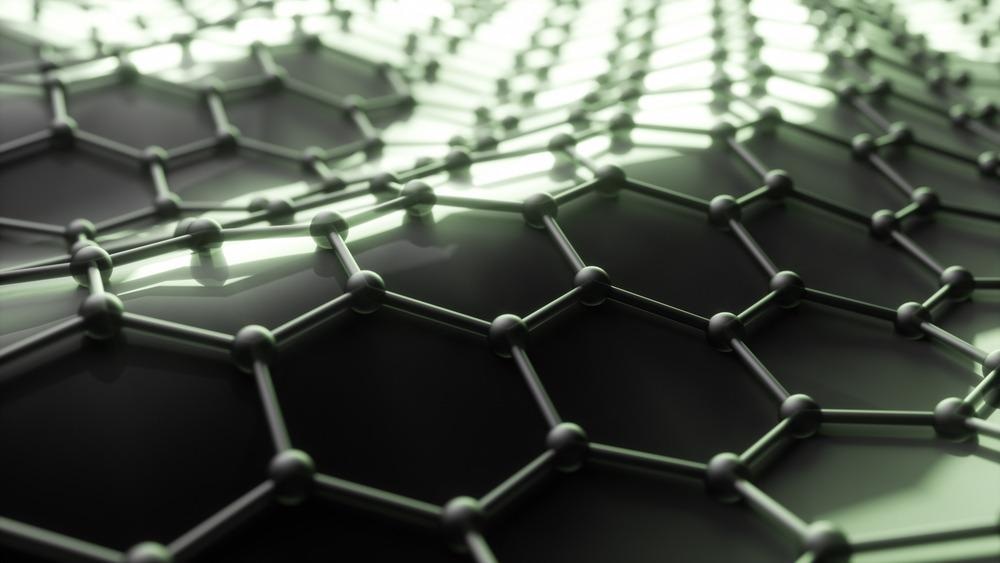In an article published in ACS Nano, an extremely hydrophilic multilayer leaf-shaped Sn4P3 on a graphene-carbon nanotube (CNT) matrix was reported to have exceptional electrocatalytic capability, and could help to pave the way for fully renewable green energy production.

Study: Super-Hydrophilic Leaflike Sn4P3 on the Porous Seamless Graphene–Carbon Nanotube Heterostructure as an Efficient Electrocatalyst for Solar-Driven Overall Water Splitting. Image Credit: OliveTree/Shutterstock.com
Commercial Scale Production of Hydrogen Energy
Owing to its high specific energy, hydrogen energy is among the greenest and most plentiful energy sources able to replace the currently dominant fossil fuels.
One of the most promising technologies for the commercially scalable generation of clean molecular H2 is electrolytic water splitting with no carbon emissions.
It entails two half-cell redox processes, namely oxygen evolution reaction (OER) at the anode and hydrogen evolution reaction (HER) at the cathode, both of which need a strong and effective electrocatalytic material.
It is then subdivided into two categories: photo-electrochemical (PEC) water decomposition and solar cell-powered electrochemical water decomposition. Despite significant research, the intrinsic limitations of PEC water decomposition, such as inadequate light-capturing capabilities, faulty band orientation, and easy charge segregation, limit its commercial-scale use.
Solar cell-driven water decomposition, on the contrary, offers an effective approach to hydrogen production that can be easily incorporated with current commercial infrastructure for practical and expandable usage.
The task at hand is to first build a single effective bifunctional catalytic material able to function in a single electrolyte environment, hence decreasing the energy barrier while simultaneously increasing the process kinetics. Furthermore, combining such a setup with a regular solar cell might be a step towards an entirely green solution for converting solar to chemical energy.
Transition Metal Phosphides as Bifunctional Catalysts
Thanks to their strong electric conductance, modest bonding energy with H2, multielectron phosphorus orbitals, and partially oxidized condition of the metal center, transition-metal phosphides (TMP) are among the most prospective durable electrocatalysts.
TMPs, on the other hand, lag behind electrocatalysts based on noble metals owing to low chemical stability and restricted accessibility of active areas, which limit their commercial use. TMP catalytic performance can be improved by switching from first to second row TMPs, which facilitates quicker HER and OER kinetics.
Synthesizing Tin Phosphide for High Catalytic Activity
Sn4P3 having a larger atomic radius and a multilayer crystalline structure composed of alternated layers of phosphorous and tin atoms might be a good option for TMPs.
Sn4P3 has been widely employed as an electrode material in sodium-ion batteries (SIB) owing to its excellent electric conductance and substantial reversible specific capacity of phosphorous. Furthermore, the facile ionic intercalation between numerous loosely bound stacked layers of tin and phosphorous atoms uncovers additional active spots, resulting in a much higher electrocatalytic activity.
The greater atomic number of tin in Sn4P3 may also result in a regulated dispersion of electron cloud density and, as a result, a reasonable contact with the electrocatalysis process's anion intermediates.
Conventional synthesis processes for the formation of Sn4P3 such as ball-milling, solvothermal synthesis, chemical vapor deposition, and so on have intrinsic limitations such as multistage aggregation and a decrease in effective surface area, resulting in poor conductance and low electrolytic activity.
To address these impediments, researchers used a conductive matrix containing Sn4P3 either as a composite (r-GO) or as a growing template (carbon cloth) to increase the effective surface area and facilitate charge transport at heterojunction contacts, resulting in an increase in electrocatalytic activity.
Key Findings of the Study
In this study, the researchers systematically created on-site an extremely hydrophilic multilayer leaf-shaped Sn4P3 on top of a three-dimensional high porosity, conductive Ni-foam graphene-CNT platform via electrolytic metallization before phosphorizing in a one-step solvothermal procedure.
The combined action of CNTs with Sn4P3 modified the electrical properties by producing a greater number of densities of state (DOS) around the Fermi level, resulting in quicker HER and OER kinetics.
The catalyst displayed amazing electrocatalysis activity by producing minimal overpotential and demonstrating sustained durability in acidic media for at least two weeks at significant applied current density.
When it created a very low cell voltage with stability for at least 65h without considerable fluctuation of the current density in 1 M KOH solution, it was determined as having excellent overall water decomposition effectiveness. Moreover, by achieving high solar to hydrogen (STH) conversion effectiveness (10.82%), the catalyst exhibited solar cell aided water decomposition using a commonly obtainable Si solar cell.
In the midst of the world's present sustainability issue, the research looked at a superior substitute to existing PEC technologies for clean fuel manufacturing using renewable energy resources.
Reference
Riyajuddin, S., Pahuja, M., et al. (2022). Super-Hydrophilic Leaflike Sn4P3 on the Porous Seamless Graphene–Carbon Nanotube Heterostructure as an Efficient Electrocatalyst for Solar-Driven Overall Water Splitting. ACS Nano. Available at: https://pubs.acs.org/doi/10.1021/acsnano.2c00466
Disclaimer: The views expressed here are those of the author expressed in their private capacity and do not necessarily represent the views of AZoM.com Limited T/A AZoNetwork the owner and operator of this website. This disclaimer forms part of the Terms and conditions of use of this website.